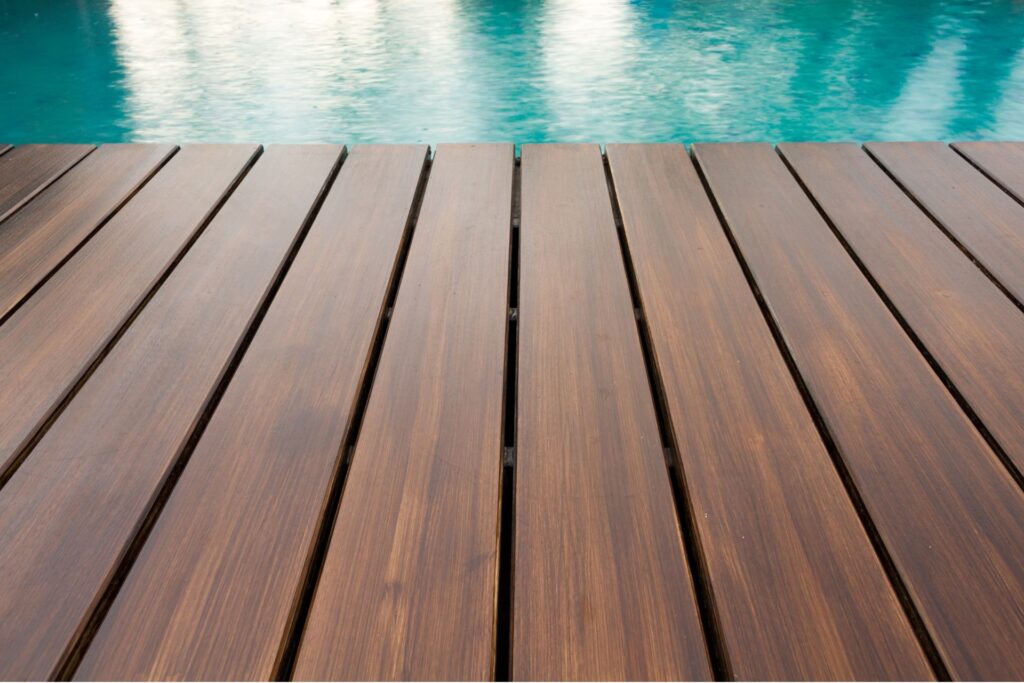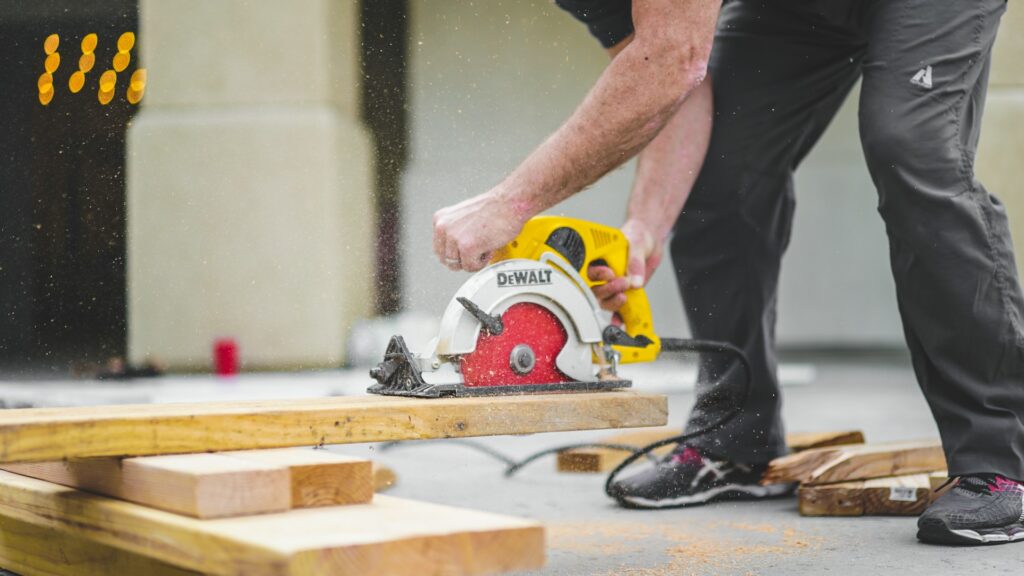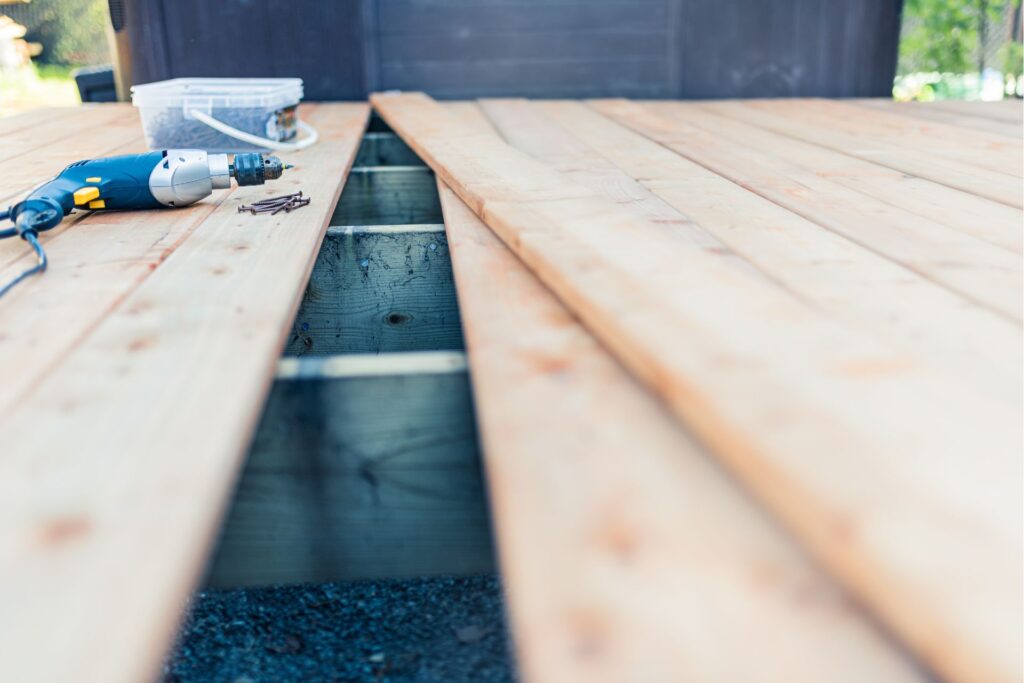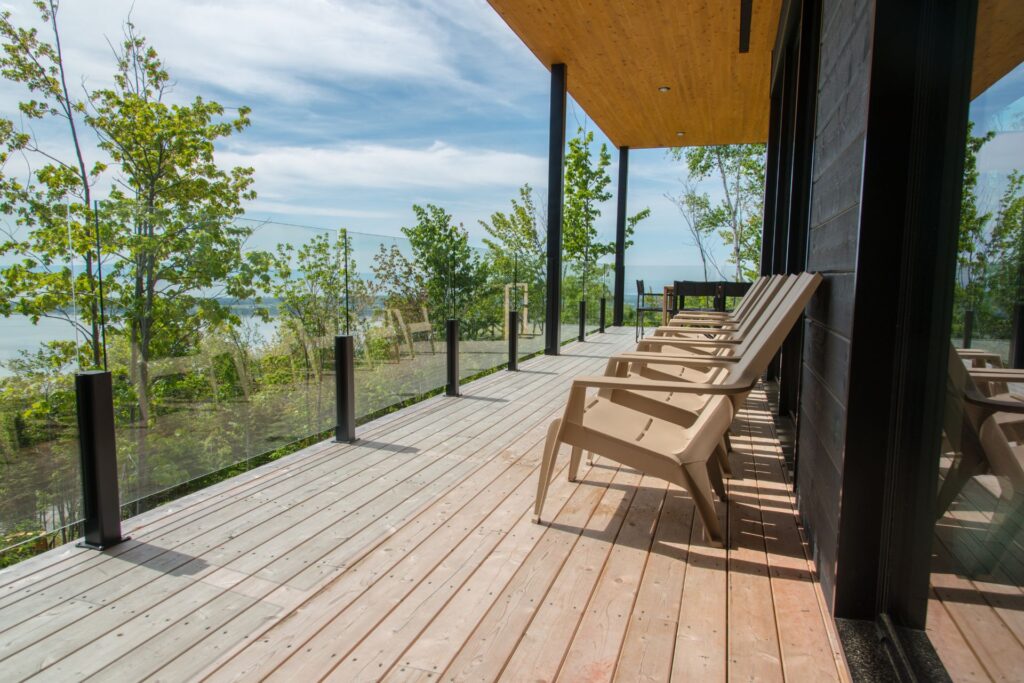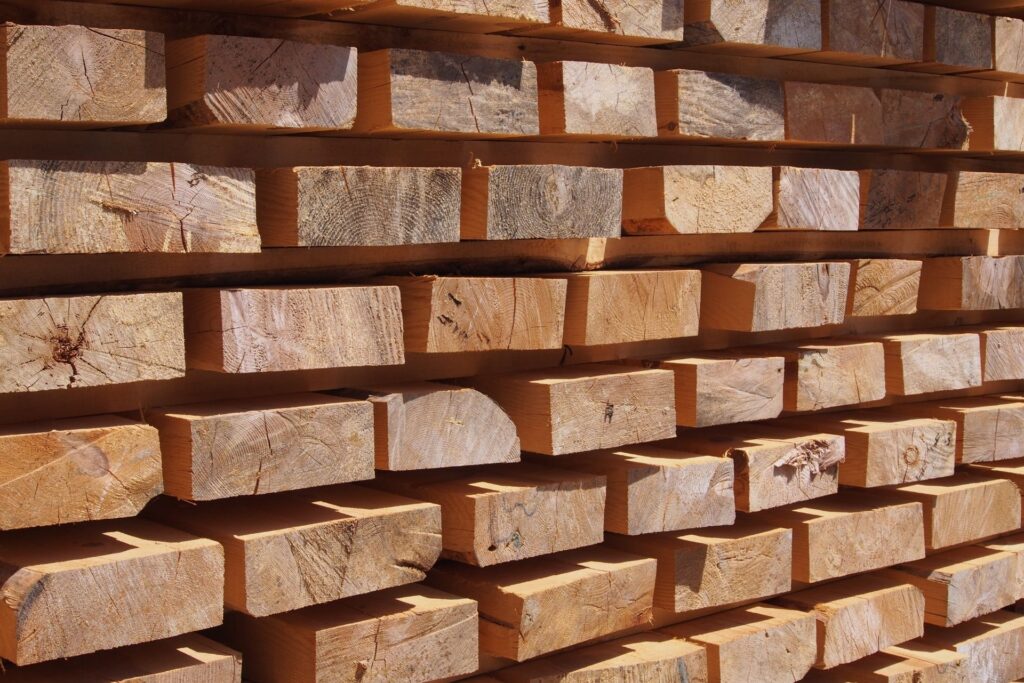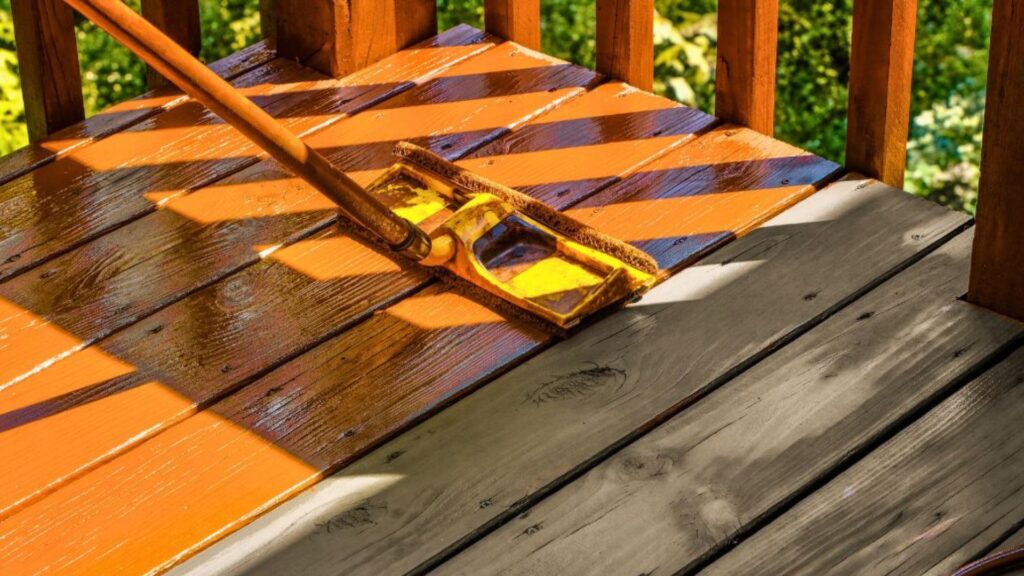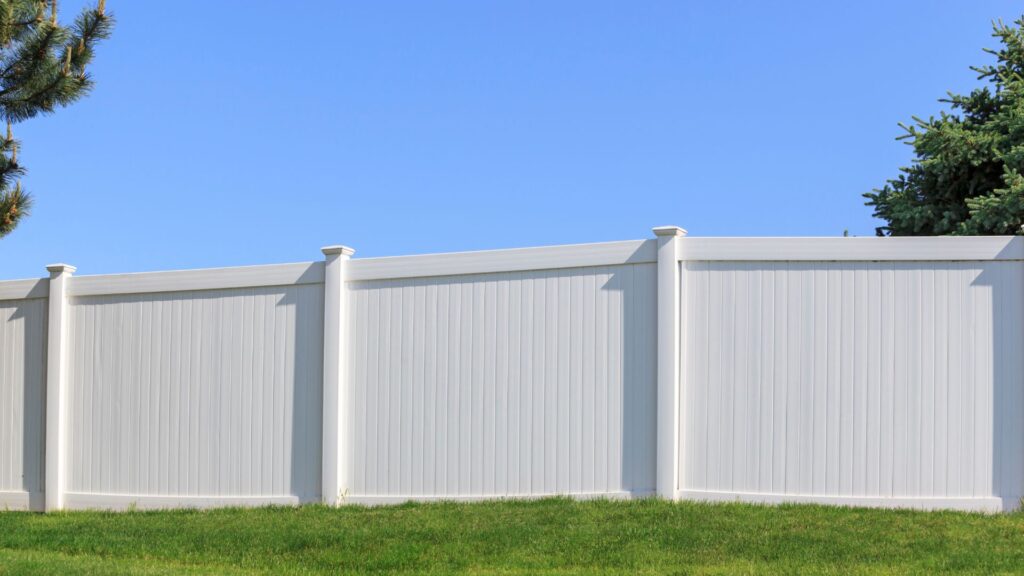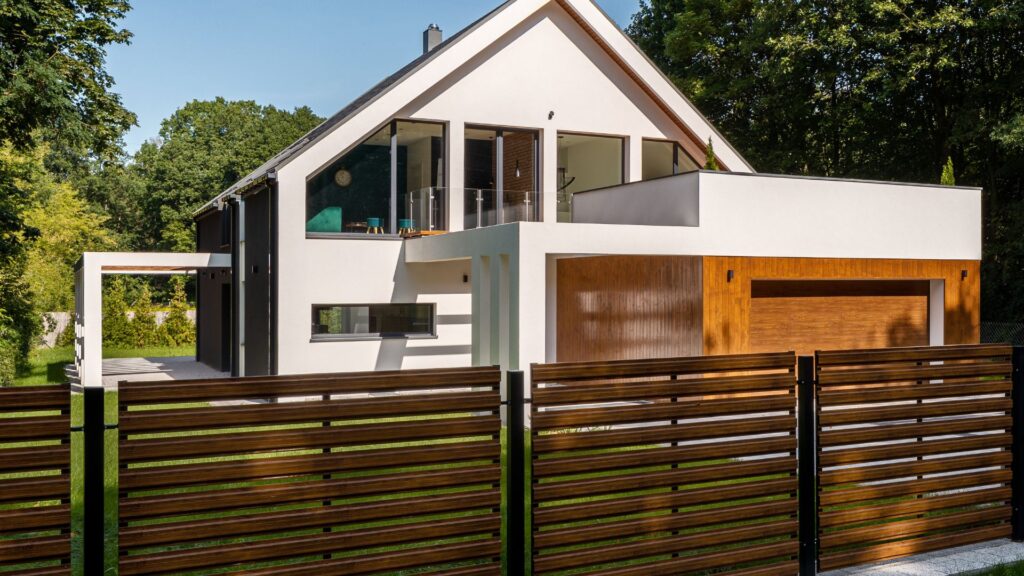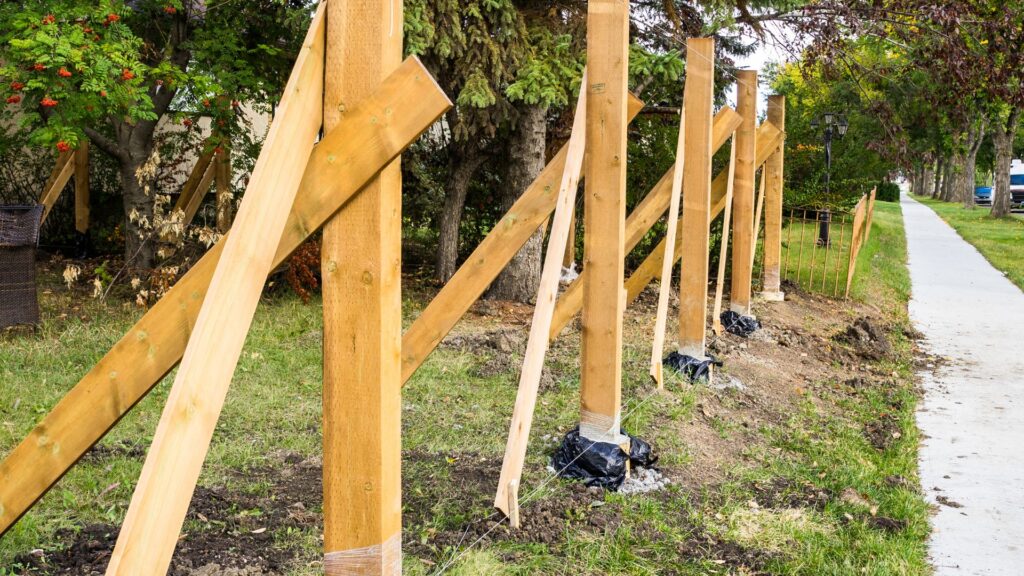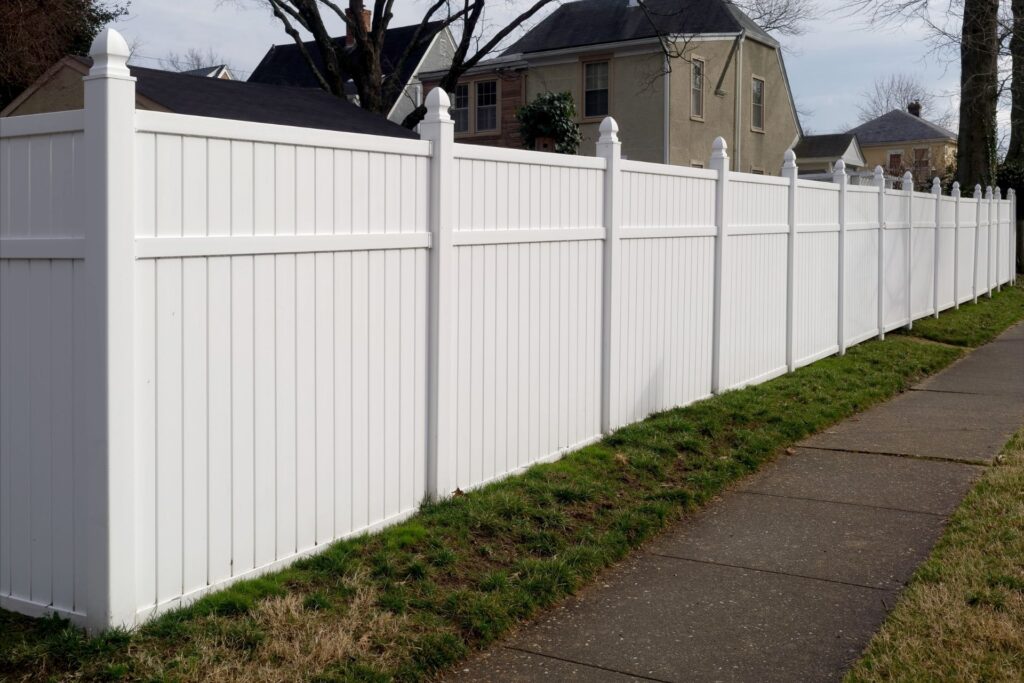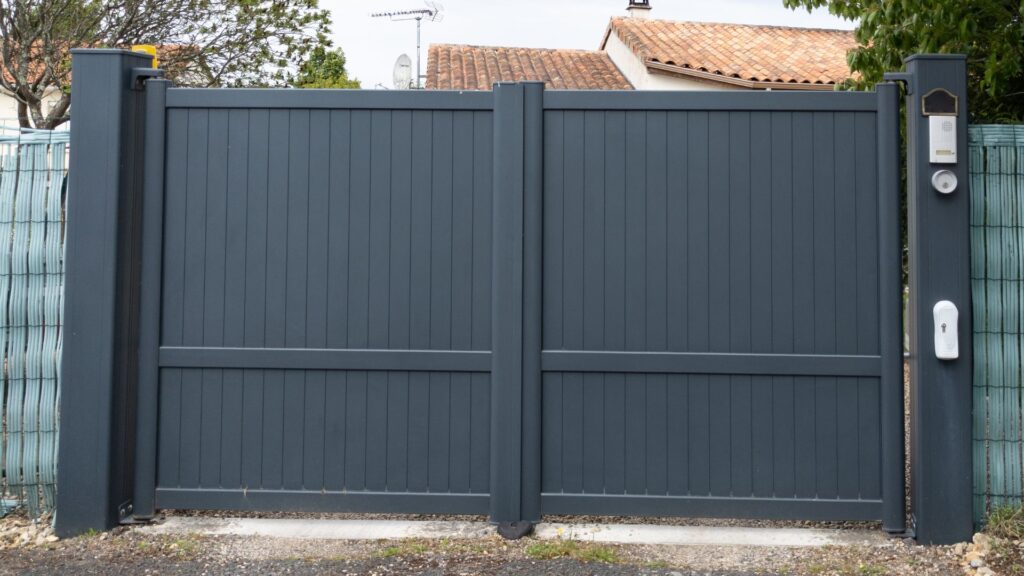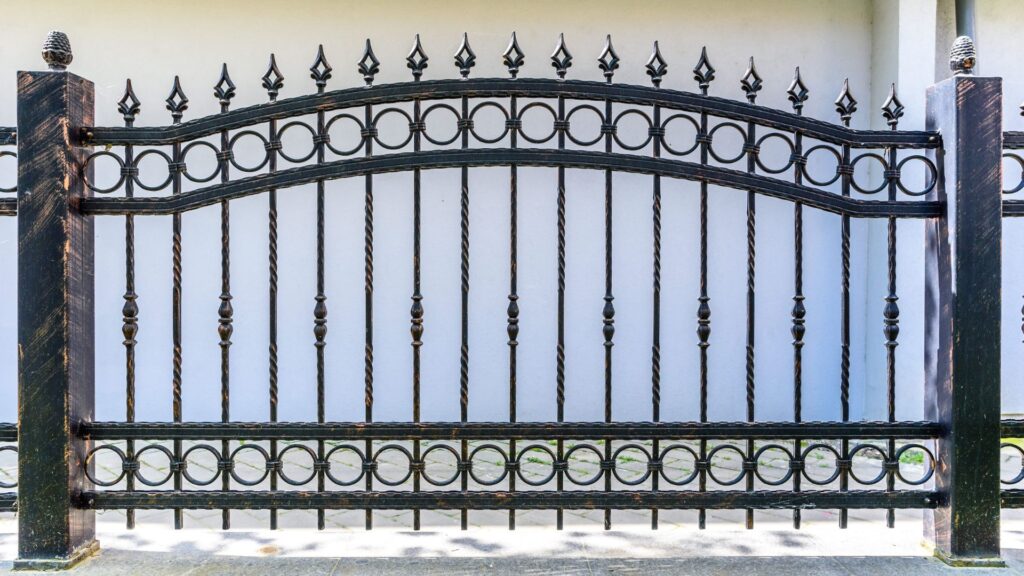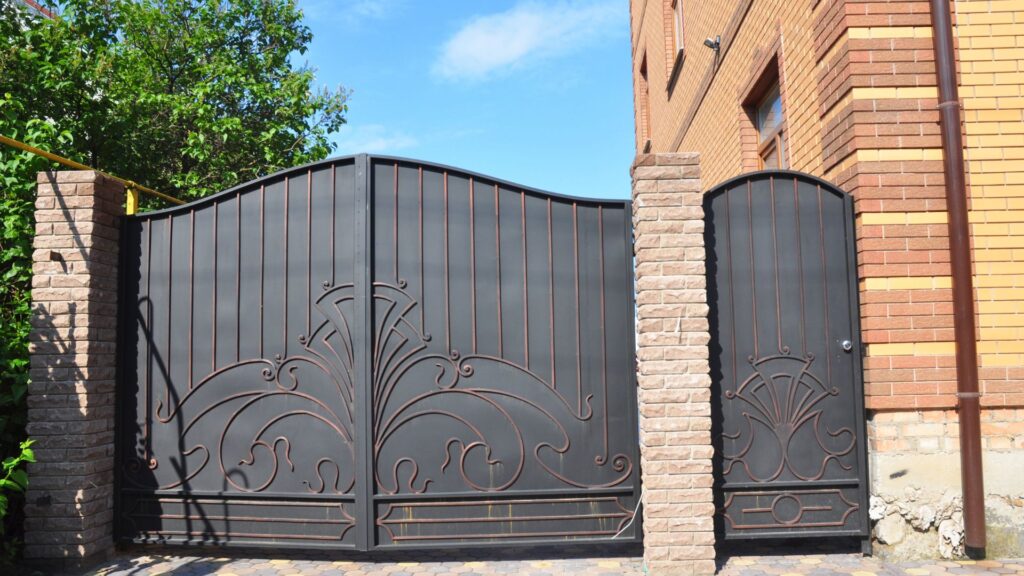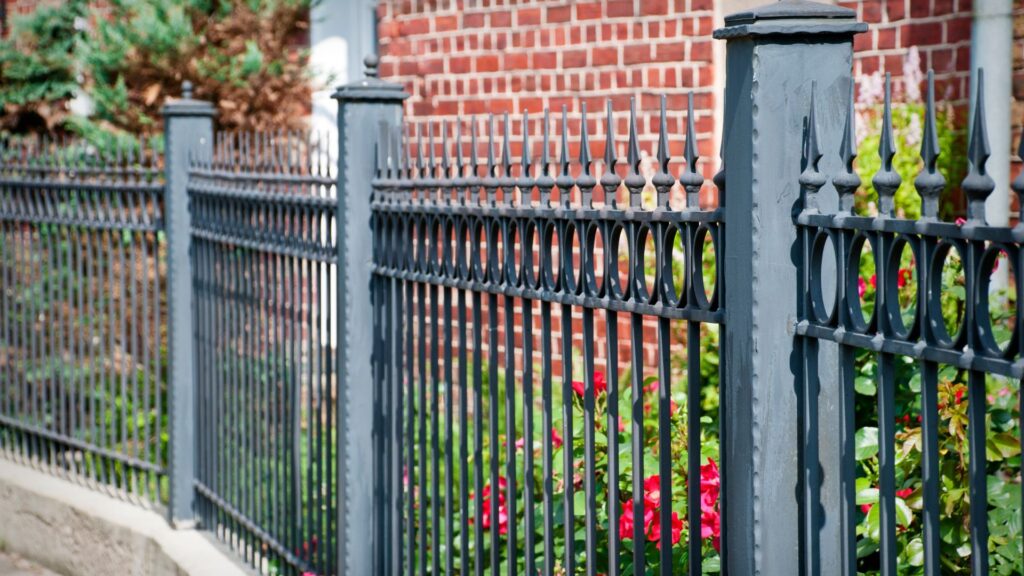Welcome to our comprehensive guide on the cost of Kwila decking in New Zealand. If you’re considering enhancing your outdoor space with a durable and visually appealing decking material, Kwila wood might be the perfect choice for you. Known for its rich color, exceptional durability, and resistance to harsh weather conditions, Kwila decking is a popular option among homeowners in NZ. In this post, we’ll delve into everything you need to know about Kwila decking costs, including the factors that influence pricing, average costs, maintenance expenses, and tips for getting the best value for your investment. Whether you’re planning a DIY project or hiring professionals, our goal is to provide you with the insights and information needed to make an informed decision and create the outdoor space of your dreams.
The cost of Kwila decking in New Zealand typically ranges from $150 to $250 per square meter, including installation. Factors influencing the price include the quality of the wood, deck size, design complexity, and additional features such as railings and steps. For a standard-sized deck, homeowners can expect to spend between $5,000 and $10,000. Kwila decking is prized for its durability, aesthetic appeal, and low maintenance, making it a worthwhile investment for enhancing outdoor spaces.
- What Is Kwila Decking?
- Benefits Of Kwila Decking
- Factors Influencing The Cost Of Kwila Decking
- Average Cost Of Kwila Decking In NZ
- Detailed Cost Breakdown
- How To Save Money On Kwila Decking
- Maintenance And Longevity
- Environmental Considerations
- FAQs: About Cost Of Kwila Decking NZ
- Conclusion
What Is Kwila Decking?
Description of Kwila Wood
Kwila, also known as Merbau, is a tropical hardwood renowned for its durability, strength, and rich reddish-brown color. Over time, Kwila decking develops a beautiful, natural patina, making it a favored choice for outdoor applications. Its dense grain and high oil content contribute to its resistance to rot, decay, and insect attacks, ensuring long-lasting performance even in harsh weather conditions.
Origin and Characteristics
Kwila wood is primarily sourced from Southeast Asia, including countries like Papua New Guinea, Indonesia, and the Solomon Islands. The tree itself can grow up to 50 meters tall, with a trunk diameter of 0.6 to 1.5 meters. One of the key characteristics of Kwila is its interlocking grain, which provides exceptional stability and minimizes the risk of warping or splitting. Additionally, the wood has a high density, typically ranging from 850 to 1,060 kg/m³, which contributes to its robustness and durability.
Why Kwila is Popular for Decking in New Zealand
Kwila’s popularity for decking in New Zealand can be attributed to several factors:
1. Durability and Longevity: The high durability of Kwila makes it an excellent choice for outdoor decking, capable of withstanding New Zealand’s diverse weather conditions, from intense sunlight to heavy rainfall.
2. Aesthetic Appeal: The rich, warm hues of Kwila wood add a touch of elegance and natural beauty to any outdoor space. Its ability to age gracefully into a silvery gray patina ensures it remains visually appealing over time.
3. Low Maintenance: Due to its natural resistance to rot, decay, and insect damage, Kwila decking requires minimal maintenance. Regular cleaning and occasional oiling are sufficient to preserve its appearance and structural integrity.
4. Sustainability: Many suppliers of Kwila decking in New Zealand source their wood from certified sustainable forests, ensuring that the environmental impact is minimized. This aspect is increasingly important to environmentally conscious consumers.
5. Versatility: Kwila decking can be used in various outdoor applications, including residential decks, pool surrounds, and commercial boardwalks. Its strength and stability make it suitable for high-traffic areas and heavy-duty usage.
By choosing Kwila decking, homeowners and builders in New Zealand can enjoy a high-quality, durable, and aesthetically pleasing decking solution that enhances outdoor living spaces while standing the test of time.

Benefits Of Kwila Decking
Durability and Longevity
Kwila, also known as Merbau, is renowned for its exceptional durability and long lifespan. This tropical hardwood is naturally dense and strong, making it highly resistant to wear and tear. One of the key benefits of Kwila decking is its ability to withstand heavy foot traffic without showing significant signs of damage. Over time, Kwila maintains its structural integrity, ensuring that your deck remains safe and sturdy for many years. Unlike softer woods that may crack or splinter, Kwila’s robust nature provides peace of mind, knowing your investment will last.
Aesthetic Appeal
When it comes to enhancing the visual appeal of your outdoor space, Kwila decking is an excellent choice. Its rich, reddish-brown hue adds a touch of elegance and sophistication to any setting. The natural grain patterns and variations in color create a warm, inviting atmosphere, making your deck a focal point of your home. As Kwila ages, it develops a beautiful silvery patina, adding character and charm. Whether you prefer the fresh, vibrant look or the weathered, rustic appearance, Kwila decking offers timeless beauty that complements various architectural styles.
Resistance to Weather and Pests
New Zealand’s climate can be challenging for outdoor structures, but Kwila decking is up to the task. This hardwood is inherently resistant to moisture, making it an ideal choice for areas exposed to rain and humidity. Kwila’s natural oils act as a barrier, preventing water penetration and reducing the risk of rot and decay. Additionally, Kwila is highly resistant to pests such as termites and wood borers. Unlike other materials that may require chemical treatments to fend off insects, Kwila’s natural properties ensure long-lasting protection, giving you confidence in your deck’s resilience.
Low Maintenance Requirements
One of the most appealing aspects of Kwila decking is its low maintenance requirements. Unlike some other decking materials that demand regular sealing, staining, or painting, Kwila requires minimal upkeep to retain its beauty and functionality. Periodic cleaning with mild soap and water is typically sufficient to keep your deck looking its best. For those who prefer a more weathered appearance, simply allowing the deck to age naturally without treatment is a viable option. This low-maintenance nature makes Kwila decking an attractive choice for homeowners who want to enjoy their outdoor space without the hassle of constant maintenance.
In summary, Kwila decking offers numerous benefits that make it a standout choice for homeowners looking to enhance their outdoor living spaces. Its durability and longevity ensure a lasting investment, while its aesthetic appeal adds timeless beauty to any home. The resistance to weather and pests provides peace of mind, and the low maintenance requirements make it a practical option for busy homeowners. By choosing Kwila decking, you’re not only investing in a beautiful and functional outdoor space but also in a material that stands the test of time.
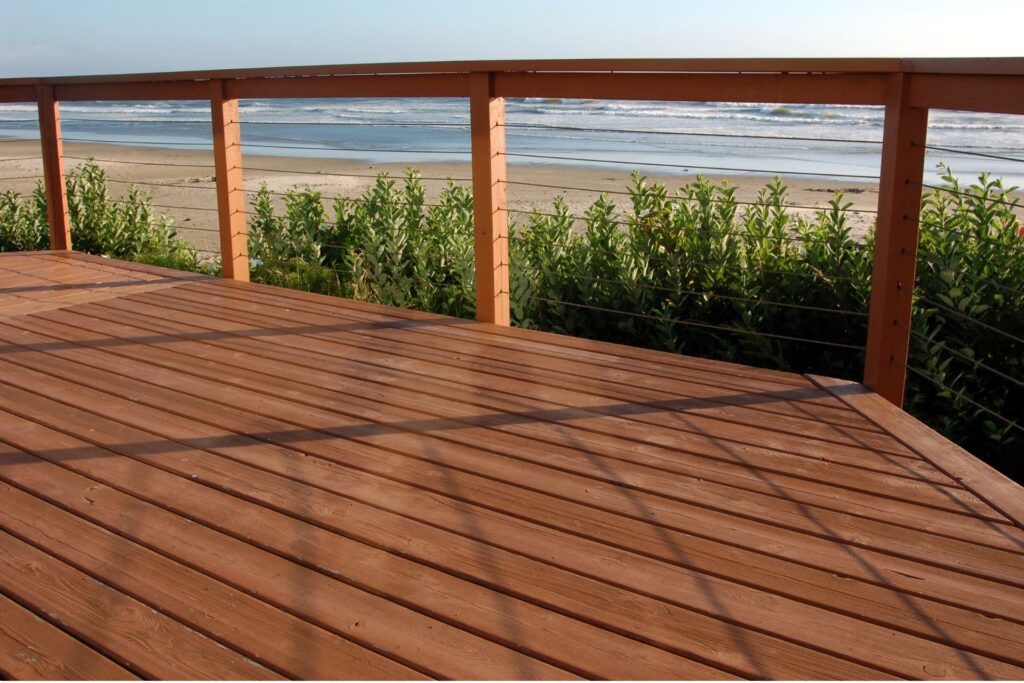
Factors Influencing The Cost Of Kwila Decking
When planning to install a Kwila deck, understanding the various factors that influence its cost is crucial. Here, we’ll delve into the main elements that affect pricing, ensuring you have a clear picture before starting your project.
Quality and Grade of the Wood
The quality and grade of Kwila wood significantly impact the overall cost of your decking project. Kwila wood comes in different grades, each with varying levels of durability, appearance, and resistance to elements. Higher-grade Kwila is more expensive due to its superior quality, fewer knots, and consistent color. Investing in premium-grade Kwila ensures longevity and less maintenance over time, which can be cost-effective in the long run.
Size of the Deck
The size of your deck directly correlates with the total cost. Larger decks require more materials and labor, leading to higher expenses. When calculating the size, consider not just the surface area but also any additional extensions or features you plan to include. A well-planned layout can help you optimize the use of materials and manage costs effectively.
Design Complexity
The complexity of your deck’s design plays a crucial role in determining the cost. Simple, straightforward designs are typically less expensive as they require less labor and time. In contrast, intricate designs with unique shapes, patterns, or multilevel structures demand more skilled labor and detailed work, increasing both material and labor costs. If you’re aiming for a customized look, be prepared for the associated costs that come with design intricacies.
Location and Accessibility of the Installation Site
The location and accessibility of your installation site can also influence the cost. Sites that are difficult to access or require additional preparation (such as clearing obstacles or leveling uneven ground) will incur higher labor costs. Additionally, if the site is in a remote area, transportation costs for materials and workers can add to the overall expense. Urban areas might have higher labor costs compared to rural locations, impacting your budget.
Additional Features
Adding features such as railings, steps, and lighting can enhance the functionality and aesthetics of your Kwila deck but also increase the cost. Railings and steps are essential for safety and accessibility, while lighting adds ambiance and extends the usability of your deck into the evening hours. Each additional feature requires extra materials and labor, so it’s important to factor these into your budget from the beginning.
By considering these factors, you can better estimate the cost of your Kwila decking project and make informed decisions that align with your budget and desired outcome. Proper planning and understanding of these elements will help you achieve a beautiful, functional deck that enhances your outdoor living space.

Average Cost Of Kwila Decking In NZ
When planning to build a deck with Kwila, understanding the average cost is crucial for budgeting. Kwila, known for its durability and aesthetic appeal, is a popular choice for decking in New Zealand. Let’s delve into the breakdown of costs, compare Kwila with other decking materials, explore price ranges for different quality levels, and examine installation costs.
Breakdown of Costs (Per Square Meter)
The cost of Kwila decking is influenced by several factors, including the price of the raw material, the size of the deck, and additional accessories. On average, the cost of Kwila decking ranges between $120 and $160 per square meter for the material alone. This price typically includes the decking boards but excludes other necessary components like screws, nails, and substructure materials.
Material Costs
Kwila Decking Boards: $120 $160 per square meter
Fasteners (screws, nails): $10 $15 per square meter
Substructure (joists, beams): $30 $50 per square meter
These estimates provide a baseline, but prices can vary based on the supplier and the specific dimensions of the decking boards.
Comparison with Other Decking Materials
To make an informed decision, it’s helpful to compare Kwila decking with other popular materials like pine and composite decking.
Pine Decking
Cost: $70 $100 per square meter
Pros: Affordable, widely available
Cons: Requires regular maintenance, less durable than Kwila
Composite Decking
Cost: $140 $180 per square meter
Pros: Low maintenance, durable, eco-friendly options available
Cons: Higher upfront cost, may not have the same natural look as wood
Kwila Decking
Cost: $120 $160 per square meter
Pros: Durable, aesthetically pleasing, natural resistance to insects and decay
Cons: Higher cost than pine, requires some maintenance to preserve color
While Kwila sits in the mid-high price range, its durability and natural beauty often justify the investment for many homeowners.
Price Ranges for Different Quality Levels
The quality of Kwila decking can vary, impacting the overall cost. Higher-quality Kwila decking will have fewer knots and blemishes, and a more consistent color.
Standard Grade Kwila
Cost: $120 $140 per square meter
Features: Good quality, some natural imperfections
Premium Grade Kwila
Cost: $140 $160 per square meter
Features: Superior quality, minimal imperfections, consistent color
Opting for premium grade Kwila ensures a more uniform and aesthetically pleasing deck but comes at a higher cost.
Installation Costs (DIY vs. Hiring Professionals)
Installation costs can significantly impact the overall budget of your Kwila decking project. Here’s a comparison between DIY installation and hiring professionals.
DIY Installation
Cost: $0 $50 per square meter (depending on tools and additional materials required)
Pros: Cost savings, personal satisfaction of completing the project
Cons: Requires time, effort, and skill; potential for mistakes
Professional Installation
Cost: $50 $100 per square meter
Pros: High-quality workmanship, faster completion, professional finish
Cons: Higher cost
Total Estimated Cost
DIY Installation (Material + Tools): $160 $225 per square meter
Professional Installation: $170 $260 per square meter
Choosing between DIY and professional installation depends on your budget, skill level, and the complexity of the project. Hiring professionals ensures a polished result, while DIY can save money if you’re confident in your abilities.
In conclusion, while Kwila decking might come with a higher price tag compared to some alternatives, its durability, beauty, and long-term value make it a worthwhile investment for many New Zealand homeowners. By considering the various cost components, quality levels, and installation options, you can better plan your decking project and enjoy a beautiful outdoor space for years to come.

Detailed Cost Breakdown
Materials Cost
When planning the cost of Kwila decking in New Zealand, one of the primary considerations is the cost of materials. Kwila, known for its durability and rich appearance, can be more expensive than other decking options. On average, Kwila timber can range from $70 to $100 per square meter. This price includes the wood itself but does not cover the additional materials required for installation. These additional materials typically include nails, screws, and sealants. Nails and screws, essential for securing the decking, can add another $50 to $100 depending on the size and scope of the project. Sealants, used to protect the wood from weather and wear, can cost around $30 to $50 per liter, with the total amount needed depending on the size of the deck.
Labor Costs
Labor is another significant factor in the overall cost of Kwila decking. Hiring professional builders ensures that your deck is constructed safely and to a high standard. Labor costs in New Zealand can vary, but generally, you can expect to pay between $50 and $100 per hour for skilled carpenters. For a typical deck that might take a team of two carpenters around 40 hours to complete, labor costs can range from $4,000 to $8,000. This cost can fluctuate based on the complexity of the deck design and any additional features you might want, such as built-in seating or intricate patterns.
Permits and Inspections
Before starting your decking project, it’s crucial to account for the costs associated with obtaining the necessary permits and undergoing inspections. In New Zealand, building permits are required for most decking projects to ensure they meet safety standards. The cost of a permit can range from $200 to $500, depending on the size and complexity of the deck. Additionally, inspections may be required at various stages of construction to ensure compliance with local building codes. Each inspection can cost between $100 and $200, and multiple inspections might be necessary, depending on the project’s scope.
Additional Costs
Beyond the primary expenses of materials, labor, and permits, there are several additional costs that can impact the total budget for your Kwila decking project. Delivery of materials to your site can add a significant amount, especially if you live in a remote area. Delivery fees can range from $50 to $200. Site preparation is another critical aspect, which might involve leveling the ground, removing existing structures, or laying a foundation. These preparations can add another $500 to $1,000 to your overall costs. Finally, waste disposal is an often-overlooked expense. Proper disposal of construction waste, including offcuts and packaging, can cost between $100 and $300.
By carefully considering each of these components – materials, labor, permits and inspections, and additional costs – you can create a comprehensive budget for your Kwila decking project. This thorough planning ensures that there are no surprises along the way and helps you stay within your financial limits while achieving the beautiful and durable deck you envision.

How To Save Money On Kwila Decking
Building a beautiful and durable Kwila deck doesn’t have to break the bank. With some strategic planning and savvy shopping, you can significantly reduce your costs. Here are some practical tips to help you save money on Kwila decking.
Tips for Budget-Friendly Purchasing
One of the most effective ways to save money on Kwila decking is to be smart about your purchasing decisions. Here are a few tips to consider:
Compare Prices: Don’t settle for the first price you find. Shop around and compare prices from different suppliers to ensure you’re getting the best deal.
Buy in Bulk: Purchasing materials in larger quantities can often result in significant discounts. If you’re planning a large decking project, buying in bulk could save you a substantial amount of money.
Consider Off-Cuts: Many suppliers sell off-cuts or shorter lengths of Kwila at a reduced price. These pieces can be perfect for smaller projects or for creating a unique design.
Seasonal Sales and Discounts
Timing your purchase can also make a big difference in the overall cost of your decking. Many suppliers offer seasonal sales and discounts that can help you save money:
End-of-Season Sales: Look out for sales at the end of the decking season. Suppliers often discount their stock to make room for new inventory.
Holiday Promotions: Major holidays like Christmas, New Year, and Labour Day often come with special promotions and discounts. Plan your purchase around these times to take advantage of the deals.
Clearance Sales: Keep an eye out for clearance sales, where you can find significant discounts on decking materials.
Choosing Simpler Designs
The complexity of your deck design can greatly impact the cost. By opting for a simpler design, you can save both on materials and labor:
Straightforward Layouts: Decks with straightforward layouts are typically cheaper to build than those with intricate patterns or multiple levels.
Minimalist Features: Choose a minimalist approach to features like railings, stairs, and built-in seating. These elements can add significant cost to your project.
Standard Sizes: Stick to standard sizes for your decking boards. Custom sizes often come with a higher price tag.
DIY Tips and Considerations
Building your deck yourself can save a significant amount of money on labor costs. However, it’s important to be prepared and know what you’re getting into:
Research and Plan: Take the time to thoroughly research the process and plan your project in detail. There are many online resources and tutorials that can guide you through each step.
Rent Tools: Instead of purchasing expensive tools, consider renting them from a local hardware store. This can save you a lot of money, especially if you only need the tools for this one project.
Safety First: Ensure you have all the necessary safety equipment and knowledge to complete the project safely. Cutting corners on safety can lead to costly mistakes and injuries.
Purchasing from Local Suppliers
Supporting local businesses can also help you save money on your Kwila decking:
Reduced Shipping Costs: Local suppliers often have lower shipping costs compared to larger, national suppliers. This can result in significant savings, especially for bulky decking materials.
Personalized Service: Local suppliers are often more willing to provide personalized service and negotiate prices. Building a good relationship with a local supplier can lead to better deals and discounts.
Community Support: Purchasing from local suppliers supports your community and helps keep the local economy strong.
By following these tips and being strategic about your purchasing decisions, you can create a beautiful Kwila deck without overspending.

Maintenance And Longevity
Recommended Maintenance Practices
Maintaining your Kwila decking is essential to preserve its beauty and ensure it lasts for many years. Regular maintenance practices include:
1. Cleaning: Clean your deck regularly to remove dirt, leaves, and debris. Use a soft-bristled brush and a mild detergent solution to scrub the surface gently. Avoid using harsh chemicals or pressure washers, as these can damage the wood fibers.
2. Oiling: To keep Kwila looking vibrant and to protect it from the elements, apply a high-quality decking oil every 6-12 months. This helps to replenish the natural oils in the wood, preventing it from drying out and cracking.
3. Inspecting: Periodically inspect your deck for any signs of damage, such as loose boards, nails, or screws. Address these issues promptly to prevent further damage and ensure the safety of your deck.
4. Sanding: Over time, the surface of your deck may become rough or splintered. Lightly sanding the surface every few years can help maintain a smooth, attractive finish.
5. Sealing: Applying a water-repellent sealant can further protect your Kwila decking from moisture, reducing the risk of rot and mold growth. This is especially important in areas with high humidity or frequent rainfall.
Costs of Maintaining Kwila Decking
While Kwila decking is known for its durability, regular maintenance does come with some costs. Here are the typical expenses associated with maintaining a Kwila deck:
1. Cleaning Supplies: The cost of mild detergent, brushes, and other cleaning supplies is relatively low, often totaling around $20-$30 annually.
2. Decking Oil: Quality decking oil can range from $50 to $100 per 5-liter can, which typically covers around 20-25 square meters. Depending on the size of your deck, you may need one or two cans per year.
3. Sealant: Water-repellent sealants cost about $30-$60 per liter. A liter generally covers 10-12 square meters, so the total cost will depend on the size of your deck.
4. Sanding Equipment: If you choose to sand your deck yourself, renting or purchasing a sander can cost anywhere from $50 to $150. Professional sanding services may range from $200 to $400, depending on the deck size.
5. Repairs: The cost of repairs can vary widely based on the extent of the damage. Minor repairs might cost as little as $50, while more significant issues could run into several hundred dollars.
How Proper Maintenance Extends the Life of Your Deck
Investing time and money in maintaining your Kwila decking can significantly extend its lifespan. Here’s how proper maintenance practices contribute to the longevity of your deck:
1. Prevents Moisture Damage: Regular cleaning and sealing protect the wood from moisture, which can cause swelling, warping, and rot. Keeping the deck dry is crucial, especially in wet climates.
2. Preserves Aesthetic Appeal: Oiling and sanding help maintain the rich, natural color of Kwila wood, preventing it from turning gray and weathered. A well-maintained deck enhances the overall aesthetic of your outdoor space.
3. Reduces Wear and Tear: By addressing minor issues like loose boards or rough surfaces promptly, you prevent them from developing into more serious problems. This proactive approach reduces the need for costly repairs and replacements.
4. Increases Safety: Regular inspections and maintenance ensure that your deck remains safe for use. Loose nails, splinters, and weakened boards can pose safety hazards, but timely maintenance keeps your deck in top condition.
5. Enhances Durability: Proper care helps maintain the structural integrity of the wood, allowing your deck to withstand heavy foot traffic and exposure to the elements. This durability means your Kwila deck can last for decades with the right upkeep.
In conclusion, while maintaining a Kwila deck involves some ongoing costs and effort, the benefits far outweigh these investments. Regular maintenance not only preserves the beauty and functionality of your deck but also ensures it remains a cherished part of your outdoor living space for many years to come.

Environmental Considerations
When planning your decking project, it’s essential to consider the environmental impact of your material choices. Kwila, also known as Merbau, is a popular choice for decking due to its durability and attractive appearance. However, its environmental footprint is a significant factor to weigh.
Sustainability of Kwila Wood
Kwila is sourced primarily from tropical rainforests in Southeast Asia and the Pacific. The harvesting of Kwila has raised environmental concerns, particularly regarding deforestation and the loss of biodiversity. Sustainable forestry practices are crucial to ensuring that Kwila remains a viable option for decking without contributing to environmental degradation.
Sustainable Kwila comes from forests managed in a way that maintains their biodiversity, productivity, and ecological processes. It involves selective logging, reducing damage to surrounding vegetation and ensuring regrowth of harvested trees. Supporting sustainable Kwila means endorsing responsible forest management practices that preserve these vital ecosystems for future generations.
Certifications to Look for When Buying Kwila
When purchasing Kwila, it’s crucial to look for certifications that verify its sustainability. The most reputable certifications include:
1. Forest Stewardship Council (FSC): The FSC certification ensures that the wood comes from responsibly managed forests that provide environmental, social, and economic benefits. FSC-certified Kwila indicates that the wood was harvested in a manner that minimizes environmental impact and supports local communities.
2. Programme for the Endorsement of Forest Certification (PEFC): PEFC certification is another reliable indicator of sustainable forest management. PEFC-certified Kwila comes from forests that are managed according to high environmental, social, and ethical standards.
3. Rainforest Alliance: This certification assures that the wood is sourced from forests managed to conserve biodiversity and ensure sustainable livelihoods for local communities. Rainforest Alliance-certified Kwila supports conservation efforts and promotes responsible forestry practices.
By choosing Kwila with these certifications, you contribute to the protection of forests and the promotion of sustainable forestry practices.
Eco-Friendly Alternatives and Their Costs
If you’re concerned about the environmental impact of Kwila, several eco-friendly alternatives can provide similar aesthetic and functional benefits:
1. Bamboo Decking: Bamboo is a highly renewable resource, growing much faster than traditional hardwoods. It’s durable, resistant to weather, and provides a similar appearance to wood. Bamboo decking can be cost-effective, often comparable to mid-range hardwood options.
2. Recycled Composite Decking: Made from a blend of recycled wood fibers and plastic, composite decking is an eco-friendly option that requires less maintenance than traditional wood. It’s resistant to rot, insects, and weather, making it a durable choice. The cost of composite decking can vary, often falling between the price of hardwood and softwood decking.
3. Thermally Modified Wood: This type of wood undergoes a heat treatment process that enhances its durability and resistance to decay without the use of chemicals. Thermally modified wood is often sourced from sustainable forests, making it an environmentally friendly choice. The cost is generally higher than untreated softwoods but comparable to other premium decking materials.
4. Certified Hardwood Alternatives: Other certified hardwoods, such as FSC-certified Teak or Ipe, can offer similar durability and beauty as Kwila. These options ensure responsible forest management practices and can be a more sustainable choice. Prices for these alternatives are typically in the same range as Kwila, depending on the specific species and certification.
By exploring these eco-friendly alternatives, you can find a decking solution that meets your environmental values without compromising on quality or appearance. Each alternative offers unique benefits and varying costs, allowing you to make an informed decision that aligns with your sustainability goals.
In conclusion, while Kwila is a popular and attractive decking option, it’s important to consider its environmental impact. By choosing sustainably sourced Kwila or exploring eco-friendly alternatives, you can contribute to the conservation of forests and promote responsible forestry practices. Remember to look for certifications like FSC, PEFC, and Rainforest Alliance to ensure your decking materials are environmentally responsible.

FAQs: About Cost Of Kwila Decking NZ
Conclusion
In conclusion, investing in Kwila decking offers numerous benefits, including its remarkable durability, stunning aesthetic appeal, and low maintenance requirements. This hardwood stands out for its ability to withstand New Zealand’s diverse climate, making it a preferred choice for many homeowners seeking long-lasting decking solutions. By choosing Kwila, you are ensuring not only the beauty and longevity of your deck but also adding value to your property. If you are considering upgrading your outdoor space, now is the perfect time to act. Contact us for a detailed quote, visit our showroom to see Kwila decking firsthand, or schedule a consultation with our experts to discuss your project in detail. Make a wise investment in Kwila decking and enjoy its benefits for years to come.
About the Author:
Mike Veail is a recognized digital marketing expert with over 6 years of experience in helping tradespeople and small businesses thrive online. A former quantity surveyor, Mike combines deep industry knowledge with hands-on expertise in SEO and Google Ads. His marketing strategies are tailored to the specific needs of the trades sector, helping businesses increase visibility and generate more leads through proven, ethical methods.
Mike has successfully partnered with numerous companies, establishing a track record of delivering measurable results. His work has been featured across various platforms that showcase his expertise in lead generation and online marketing for the trades sector.
Learn more about Mike's experience and services at https://theleadguy.online or follow him on social media:

